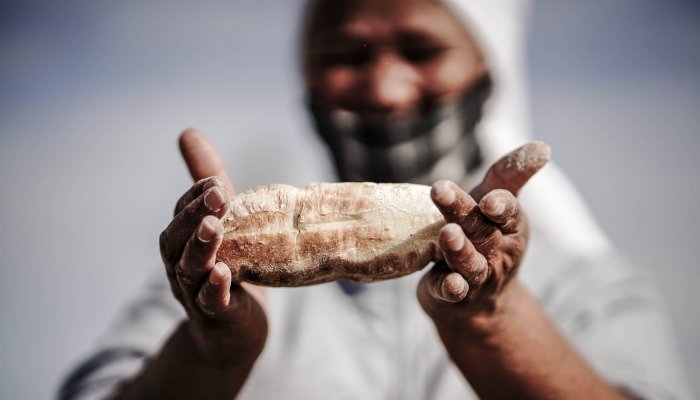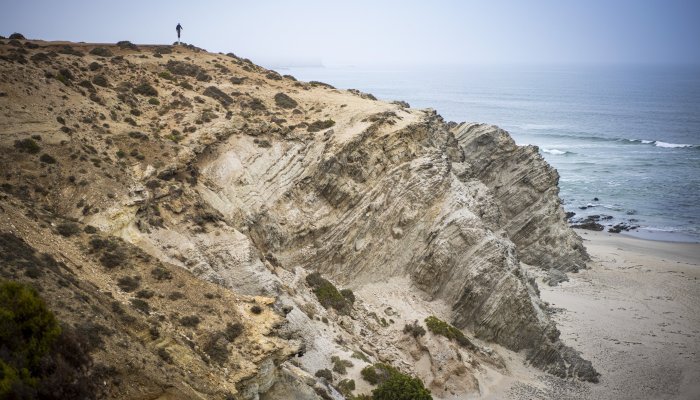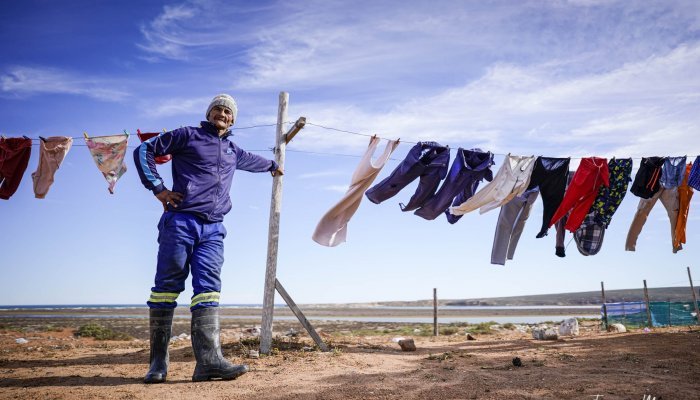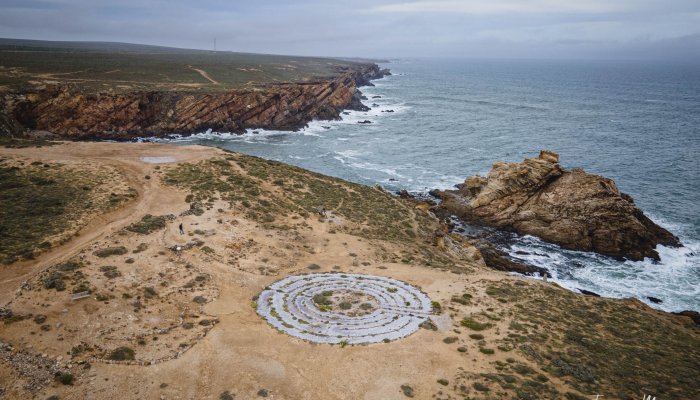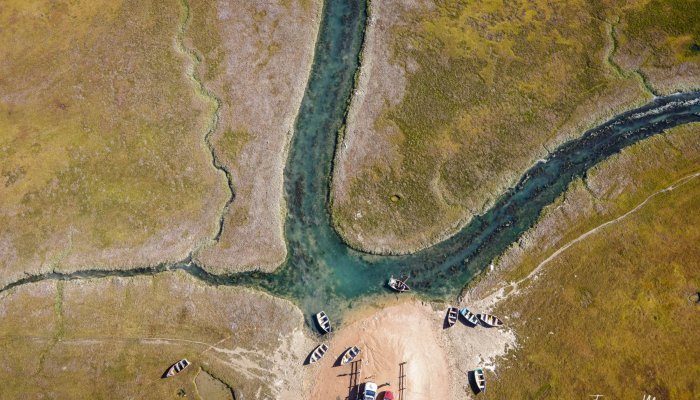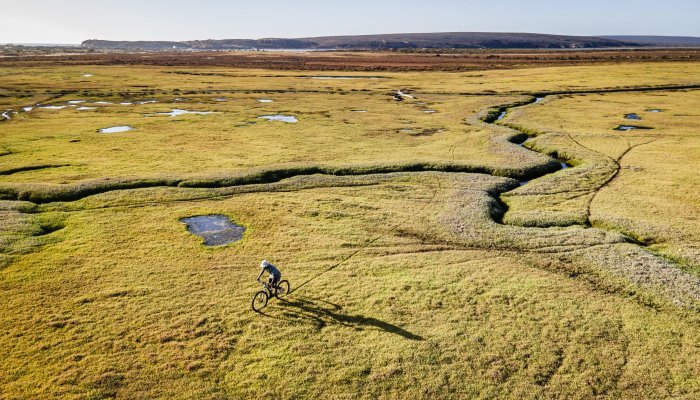“Mining is an essential global endeavour, and unarguably necessary for the modern economy. The switch to extracting renewable energy minerals may well be for the greater good, but it does not equate to sustainability, as the spoils are frequently unevenly distributed”. — Professor Henrik Ernstson: KTH Royal Institute of Technology, Stockholm
There’s no place quite like the wild, wild West Coast. An arid hinterland of rugged outcrops, scrubby plains and windswept dunelands collide with the icy Atlantic Ocean, and in the process transmogrify into a magical outdoor space.
It will either bore you mindless, scare you senseless, or excite you beyond measure. There’s the drama of the desert, the minimalist monochrome plains, and the intoxicating lure of a mist-shrouded shore. You will either love it or hate it, but you can never ignore it.
Geologically and ecologically, the region is a tourism gem par excellence, even more so when you begin to venture inland. Panoramas abound along every back road, yet the space remains relatively undiscovered, except for the die-hard locals who abandon themselves utterly to the lure of the land.
Travellers who trip into this immaculate mind-space will discover a destination as diverse as it is breath-taking. It is indeed a treasured shore – with untold natural wealth awaiting when you explore into Namaqualand – but the future of this paradise now hangs in the balance.
The eco-warriors
It is a complex situation, but this – in the most simplistic terms – is the background. At the heart of the matter, there is a stand-off between those eco-warriors prepared to fight to protect nature and mining conglomerates aiming to extract the area’s mineral riches.
My reflex impulse is to picket on the side of the green peace contingent. This stands to reason, after all, as on journeys over a couple of decades into the West Coast and Namaqualand, I’ve been gifted with free and unfettered access to one of South Africa’s truly wild spaces.
The treasures my outdoor tribe crave are not diamonds or precious metals or heavy minerals, but rather the endless stoke you will discover when you venture outside. Run or ride wild upon those hinterland trails bisecting the inland plateau or suit up to do battle with the gargantuan rollers, slabs and grinders charging in from the icy Big Blue.
“What you must understand is this is not just about surfers, trail runners or wild campers”, says Mike Schlebach of advocacy group Protect the West Coast (PTWC). “Sure, we would like to maintain access to the ocean and trails, but one of our core missions is to protect the natural environment along 500km-plus of coastline, where more than 6 300 botanical species flourish.”
Local communities
More importantly, this NPO is dedicated to informing and empowering civil society – those communities in the tiny villages dotting the area – to help them unite against the current slough of unjust mining activity. Together with community organisations, PTWC can use the power of legal action to enforce accountability from conglomerates and government.
“We are not anti-mining per se, but applications have skyrocketed, with hordes of illegal operators taking advantage of the lax controls to perform unlawful – and often destructive – operations”, explains Schlebach. “This is contrary to the thriving, abundant West Coast we would like to help preserve for future generations.”
The West Coast subsistence fishing community is one population group with their future at stake. “Mining will change the character of the place, damage the fishing, damage the beauty and nature”, says Andre Cloete, chairperson of the Papendorp Development Council, and one of many community voices challenging mass mineral extraction on their very doorstep.
The miners
Global mining companies, based internationally, see this in a very different light. Various applications are in the works to mine a multitude of unspoilt sections of the coastline stretching from Cape Columbine to the Namibian border.
Diamond prospecting has a legacy that stretches back more than a century, but current exploration drilling operations include probing for manganese ore, sillimanite, monazite, leucoxene and kaolin. There is a shift to "renewables", and this is hailed as progressive.
Potential positive spin-offs in applications state that mining “already contributes to the economies of surrounding towns” and that it “will boost local businesses and SMMEs and reduce youth and general unemployment”.
The value of these benefits – and precisely how they will help develop local communities – are rather vague, though, and a major cause for concern is the lack of environmental assessment linked to the cumulative effect of mining in the area.
The overall contribution of mining to the South African GDP cannot be ignored, however. To date, the economic impact has largely been centred on traditional mineral resources such as gold, iron ore, platinum, diamonds, and manganese, and this contributes around 8% to SA’s overall GDP. (This should convert to R202 058 million by 2024).
Employment is another key factor, and current figures shows that the mining sector creates at least half a million jobs. The industry is however facing a number of obstacles, with the energy supply crisis impacting hugely on profitability and sustaining ongoing growth.
Unlocking international investment is one current strategy to counter this, with African mining houses courting Chinese companies to strengthen their competitive position within the global sphere. According to Mining Indaba, the resulting financial injection from their economy was estimated at approximately $100 billion in 2019 to the African continent as a whole.
Mineral giants meet the Dragon
Africa’s mineral wealth is enormous, equating to a global share of 90% of platinum and cobalt, 65% of manganese, a solid 50% of gold, and 35% of uranium reserves. South Africa and the DRC have emerged as major players on the world stage, but China’s voracious appetite for raw mineral wealth is not necessarily good news for areas such as the West Coast.
Traditionally, Chinese businesses run a closed ship when it comes to their African mines, which means precious little opportunities are created for the surrounding communities. According to the respected www.earth.org, “unsustainable debts, environmental damage, and joblessness” also plague many of these cooperative projects.
The experts nonetheless maintain that African nations are left with few alternatives: “Walking a tightrope between energy security and debt traps, African leaders will have little choice but to leverage China’s equitable and sustainable development proposals.” This will be specifically relevant to mining for renewables, where the market (and the profit margin) is more robust.
In the same vein, many small-town communities in South Africa’s new "Renewables Belt" are caught in an economic pincer grip. They are torn between the long-term potential of preserving the environment on one hand, betting that the much-heralded boom in the tourism industry will lead to local social upliftment over the next generation or two.
On the other hand, they align themselves with the mining companies, which generate at least some job opportunities in the surrounding towns. As an example, access to the tailings (or left-over rock pebbles) allows a small Doring Bay concern to employ half a dozen people; they clean and bag the pebbles, and supply these to nurseries and building companies around the Cape.
Is balance possible?
Obviously, employment on a wider scale is created, too, including travel and transport linked to mining supplies, an upswing in accommodation, FMCG and catering prospects linked to the hospitality industry, and the creation of short-term manual labour positions (when migrant labour is not utilised).
“I work well with established mines in the area, and many have a good environmental track record”, explains Monika de Jager, Namaqua West Coast’s Tourism Manager. “Our concern is as always those institutions who operate illegally and without the necessary EPAs in place.”
“Our region’s economy must be based upon constant income streams from more than mining, and agriculture, tourism and small industry need to have their place in the Namaqua sun”, she explains. And this is where the focus is hopefully shifting to new and more inclusive economic opportunities, diametrically opposed to degraded, lifeless and desolate mine dumps.
Nature-based solutions are touted by many as the potential new Holy Grail, with the benefit that they are non-destructive, sustainable and financially viable. Wide-ranging projects are popping up along the West Coast specifically, offering a blend of employment opportunities, long-term job security, environmental sustainability and social upliftment.
The African Development Bank defines "nature-based solutions" as the "process of working with and around natural ecosystems to deliver real-world benefits for climate resilience and sustainable development". Their main focus is to restore damaged ecosystems, conserve biodiversity, and integrate natural resources management.
Often, the conservation aspect can go hand in hand with resource management. For instance, using kelp to create biofuel – or as a food source – ticks both boxes. “This is what we envisaged as a cross-functional economic activity in unison with nature and her people,” says Mike Schlebach of Protect the West Coast. “All we need now is for government and local business to unite so we can celebrate this combo of environmental and economic abundance available to us all.”
FACT PANEL:
Nature-based solutions
The first mention of the term "seaweed revolution" can be traced back to a 1976 issue of the journal Science. In the article, the author argues for the potential of this ancient aquatic plant as a key solution to world hunger.
More recently, in 2021, a feature in www.theconversation.com focused on how seaweed could contribute to solving the looming climate crisis. A discussion on how fast-growing kelp species could mitigate greenhouse gas emissions and improve soil health served as the seed for Nadia Scheffer’s business plan and the formation of the Seaweed Association of SA.
The global worth of the seaweed industry is projected to be worth at least $25 billion by 2028, covering a product range as diverse as high-protein, plant-based foods, agricultural fertilisers, anti-inflammatory drugs, sustainable cosmetics, bioplastics, animal feeds and biofuel.
Scheffer is launching an aquaculture pilot project in Langebaan, in collaboration with a coalition of non-profit, scientific and commercial BBBEE Partners. “We are committed to positioning South Africa at the forefront of this seaweed revolution,” says Scheffer.
“Currently, the focus of the kelp industry lies predominantly in its export value. However, we firmly believe that by building a robust infrastructure and promoting local value-addition, we can unlock the full potential of this resource, thereby creating a thriving industry here in SA.”
Read more about SA’s "seaweed revolution" at www.seaweedsouthafrica.com.



